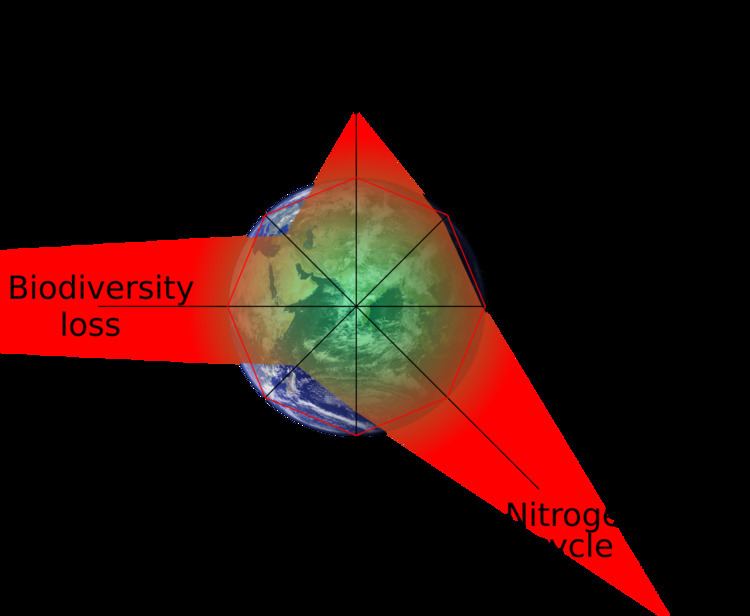 | ||
Ecological engineering is an emerging study of integrating ecology and engineering, concerned with the design, monitoring, and construction of ecosystems. According to Mitsch (1996) "the design of sustainable ecosystems intends to integrate human society with its natural environment for the benefit of both".
Contents
Overview
Ecological engineering emerged as a new idea in the early 1960s, but its definition has taken several decades to refine, its implementation is still undergoing adjustment, and its broader recognition as a new paradigm is relatively recent. Ecological engineering was introduced by Howard Odum and others as utilizing natural energy sources as the predominant input to manipulate and control environmental systems.
Mitsch and Jorgensen wrote that ecological engineering is designing societal services such that they benefit society and nature, and later noted the design should be systems based, sustainable, and integrate society with its natural environment. Odum emphasized that self-organizational properties were a central feature to ecological engineering.
Mitsch and Jørgensen were the first to define ecological engineering and provide ecological engineering principles. Later they refined the definition and increased the number of principles. They defined and characterized ecological engineering in a 1989 book and clarified it further in their 2004 book (see Literature). They suggest the goal of ecological engineering is:
- the restoration of ecosystems that have been substantially disturbed by human activities such as environmental pollution or land disturbance, and
- the development of new sustainable ecosystems that have both human and ecological values.
They summarized the five concepts key to ecological engineering as:
- it is based on the self-designing capacity of ecosystems,
- it can be a field test of ecological theory,
- it relies on integrated system approaches,
- it conserves non-renewable energy, and
- it supports biological conservation.
Bergen et al. defined ecological engineering as:
- utilizing ecological science and theory,
- applying to all types of ecosystems,
- adapting engineering design methods, and
- acknowledging a guiding value system.
Barrett (1999) offers a more literal definition of the term: "the design, construction, operation and management (that is, engineering) of landscape/aquatic structures and associated plant and animal communities (that is, ecosystems) to benefit humanity and, often, nature." Barrett continues: "other terms with equivalent or similar meanings include ecotechnology and two terms most often used in the erosion control field: soil bioengineering and biotechnical engineering. However, ecoengineering should not be confused with 'biotechnology' when describing genetic engineering at the cellular level, or 'bioengineering' meaning construction of artificial body parts."
This engineering discipline combines basic and applied science from engineering, ecology, economics, and natural sciences for the restoration and construction of aquatic and terrestrial ecosystems. The field of ecological engineering is increasing in breadth and depth as more opportunities to design and use ecosystems as interfaces between technology and environment are explored.
Implementation of ecological engineering has focused on the creation or restoration of ecosystems, from degraded wetlands to multi-celled tubs and greenhouses that integrate microbial, fish, and plant services to process human wastewater into products such as fertilizers, flowers, and drinking water.
Potential applications of ecological engineering in cities have included the field of landscape architecture, urban planning, and urban horticulture, which can be synthesized into urban stormwater management. Potential applications of ecological engineering in rural landscapes have included wetland treatment and community reforestation through traditional ecological knowledge.
Recent lifestyle and habitat planning examples include the permaculture movement.
Design guidelines
Ecological engineering design will follow a cycle similar to engineering design - problem formulation (goal), problem analysis (constraints), alternative solutions search, decision among alternatives, and specification of a complete solution. Elements that distinguish ecological engineering design are elaborated by many authors, however a singular approach is still absent. Typically, the design goal involves protecting an at-risk ecosystem, restoring a degraded ecosystem, or creating a new sustainable ecosystem to satisfy needs of nature and society.
A temporal framework is provided by Matlock et al., stating the design solutions are considered in ecological time. In selecting between alternatives, the design should incorporate ecological economics in design evaluation and acknowledge a guiding value system which promotes biological conservation.
Academic curriculum
An academic curriculum has been proposed for ecological engineering, and institutions around the world are starting programs. Key elements of this curriculum are:
Complementing this set of courses are prerequisites courses in physical, biological, and chemical subject areas, and integrated design experiences. According to Matlock et al., the design should identify constraints, characterize solutions in ecological time, and incorporate ecological economics in design evaluation. Economics of ecological engineering has been demonstrated using energy principles for a wetland., and using nutrient valuation for a dairy farm
